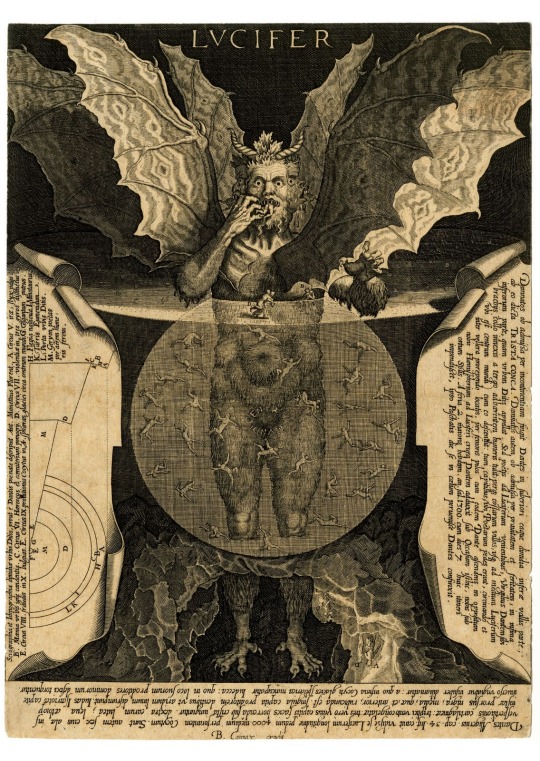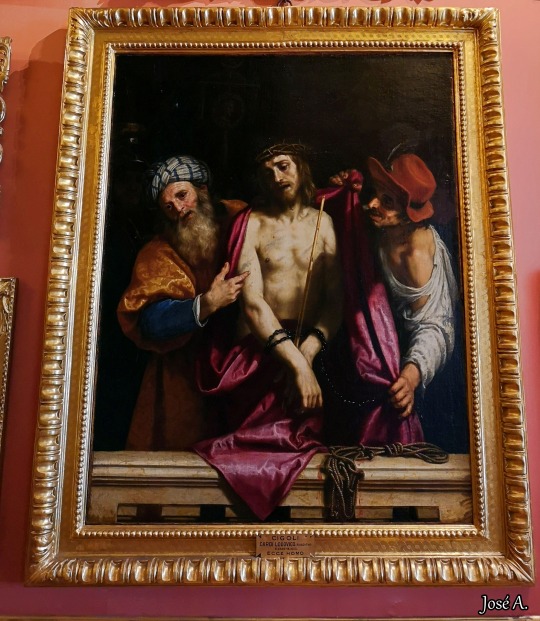#lodovico cardi
Explore tagged Tumblr posts
Text

The Penitent Magdalene (detail, 1598) Lodovico Cardi
6K notes
·
View notes
Text

Cigoli (Italian, 1559-1613)
Vase of Flowers (detail of The Annunciation)
11 notes
·
View notes
Text

1 note
·
View note
Photo

An engraving of Dante’s encounter with Lucifer/Satan at the end of the Inferno. Illustrators of Dante have given us a number of depictions of Dante’s fallen angel—a monstrous beast with multiple wings and three heads; icy blasts from the wings travel through the circles of Hell—but this is one I’d not seen before. The engraving is by Cornelis Galle the Elder after a drawing by Lodovico Cardi (also known as Cigoli), and it’s unusual for showing Lucifer in full rather than the more common partial view of the monster imprisoned in the ice. LVCIFER Cornelis Galle the Elder
88 notes
·
View notes
Text

Lucifer - Cornelis Galle the Elder, after Lodovico Cardi, 1595.

Descent of Christ into Limbo (detail) - Bartolomé Bermejo, c.1475.
7 notes
·
View notes
Text

Ecce Homo
Lodovico Cardi, conocido como Cigoli (Cigoli, San Miniato 1559 - Roma 1613)
Fecha: 1607
Museo: Palacio Pitti
Recopilación: Galería Palatina
Colocación: Salón de Ulises
Técnica: Pintura al óleo sobre lienzo
Dimensiones: 175x135 cm
Inventario: Inv. 1912 n. 90
La pintura, quizás la más conocida de Ludovico Cigoli y considerada una de sus obras maestras, fue un encargo del noble romano Massimo Massimi. La biografía de Cigoli, escrita por su sobrino en 1628, transmite la noticia -un verdadero topos- del concurso promovido por Massimi que habría enfrentado a tres pintores, Caravaggio, Domenico Passignano y Cigoli, convocándolos a competir sobre un tema cristológico. Cigoli superó a sus oponentes con esta pintura, en la que la preciosidad de la materia pictórica, los damascos, rasos y terciopelos, los refinados efectos cromáticos venecianos, se mezclan con el intenso naturalismo de los rostros, retratados del natural. El ilusionismo perspectivo creado por el parapeto de mármol en primer plano imparte una fuerte teatralidad a la escena, resultado del intercambio continuo entre pintura y escenografía en la Florencia del siglo XVII. La fama del cuadro también está ligada a esta historia, a la gran resonancia que tuvo la obra en comparación con el realismo de Caravaggio, tanto en el contexto artístico romano como florentino. Ya antes de 1630 la obra estaba registrada en la colección florentina de Don Lorenzo de'Medici, y poco después (c. 1638) entró en la colección del Gran Duque de Toscana Fernando II de'Medici. Desde entonces, salvo un breve paréntesis español y la enajenación temporal tras las requisiciones napoleónicas (1799-1815), el lienzo ha permanecido siempre en el Palacio Pitti.
Texto por Anna Bisceglia
Información de la web de la Gallerie degli Uffizi, fotografía de mi autoría.
3 notes
·
View notes
Text

The Penitent Magdalene (detail, 1598) Lodovico Cardi
0 notes
Photo

Lodovico Cardi, called Cigoli Six studies for St. Sebastian tended by Irene and her Maid
Pen and ink on paper, 62.5 x 17.4 cm, 16/17th century
57 notes
·
View notes
Photo

Detail: Jacob's dream, by Lodovico Cardi, known as Cigoli (1559-1613).
#art#details#renaissance#dream#angels#paradise#tale#paintings#1500#1600#cigoli#lodovico cardi#jacob's dream#art history
3K notes
·
View notes
Photo










Convento del Bosco ai Frati (Convento di San Bonaventura) in Mugello, 25 km northeast of Florence
Founded in the 6th or 7th century, donated to the Franciscans in early 1200s, almost completely abandoned In 1349 due to the Black Death plague, closed by Napoleon and then again in 1866 by the government of the newly united Kingdom of Italy, the convent survived all the hard times and is still inhabited by Franciscan friars.
The convent has a Museum of Sacred Art which conserves a wooden Crucifix attributed to Donatello or his workshop (c.1460), commissioned and donated to the convent by the Medici.
Other artworks created for the convent (the three last images in this post) are: - Pala di Bosco ai Frati by Fra Beato Angelico, 1450-1452, now in Museo nazionale di San Marco, Florence - Annunciation attributed to Antonio del Ceraiolo, 16th century - Deposition by an unknown artist, school of Lodovico Cardi (Cigoli), 17th century
More info: [1]; [2] More images
#convento del bosco ai frati#convent#san bonaventura#fra beato angelico#antonio del ceraiolo#lodovico cardi#cigoli#donatello#italian art#architecture#church interior#renaissance#baroque
19 notes
·
View notes
Photo

“The penitent Magdalene” (1598) by Italian artist Lodovico Cardi aka Cigoli (1559-1613).
34 notes
·
View notes
Text
El sueño de Jacob, 1593. 🎨Cigoli (Lodovico Cardi), 1559-1613

#El sueño de Jacob#1593. 🎨Cigoli (Lodovico Cardi)#1559-1613#familiafranciscana#avemaria#hailmary#franciscanos#jesus#terciariosfranciscanos#franciscano#jesuschristo#terciariofranciscano#sanfrancisco
11 notes
·
View notes
Photo

Jacob’s Dream - Lodovico Cardi
4 notes
·
View notes
Text

Happy Birthday, Lodovico Cardi da Cigoli (1559-1613)
Mary Magdalene or The beauty of God
12 notes
·
View notes
Photo

Lodovico Cardi (also known as Cigoli), 1559-1613
Venus and Adonis, n/d, oil on copper, 28,5x39,5 cm
Private Collection
This beautiful Venus and Adonis is one of the few surviving works by Cigoli on copper and displays the artist's idiosyncratic use of strong primary colours and soft handling of paint. The preparatory drawing of almost identical dimensions confirms the attribution and gives us a useful insight into the artist's working process. The main difference between the two is in the positioning of Venus's arm: in the painting it is lower, and pulls back Adonis's clothing to reveal his wound. The significance of the wound, which is soon to cause Adonis's death, is also emphasised by the way Venus specifically directs her gaze at it rather than look at his face, as she does in the drawing. (Sotheby’s)
19 notes
·
View notes
